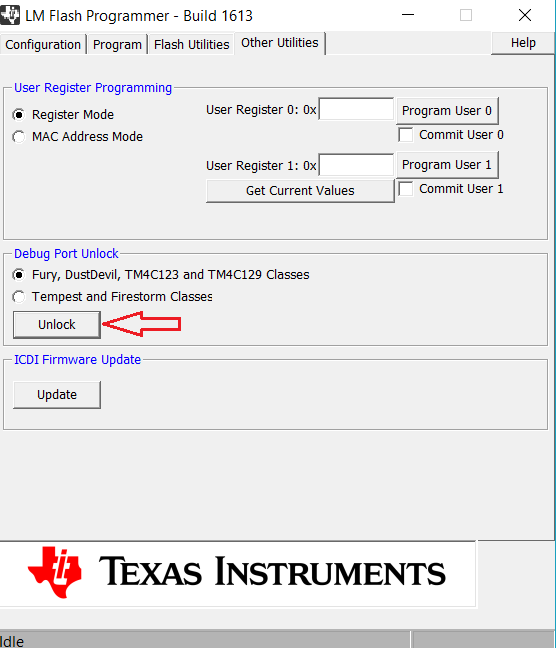Hi
We want to protect 16 KB bootloader code as read only by call FlashProtectSet(ui32Address, FlashReadOnly). It's customized bootloader saved in Flash.
But it make sure it can be updated by external MCU instead of unlock by LM Flash programmer or Uniflash with ICDI. So can we unlock it by API function in application code in condition of receiver some specific command from external controller?
It seems there is a small amount of time during reset where the flash will not be protected until the HW load the values that have been committed for the Flash Memory Protection Registers.
Can we make use of this momentary time to unlock it by API and erase flash? If yes, could you share us some code example how to do that? Thanks a lot.


